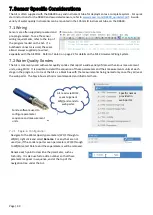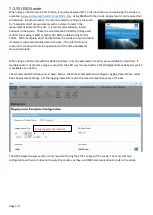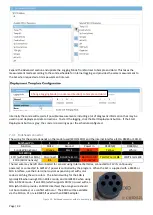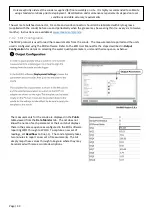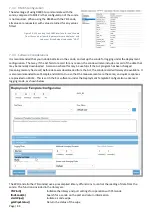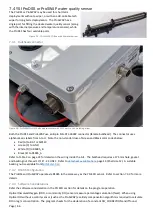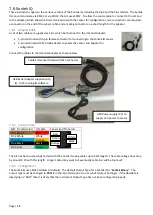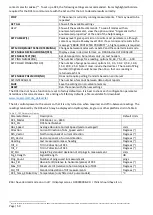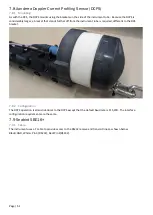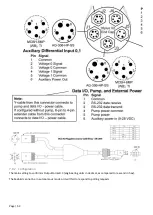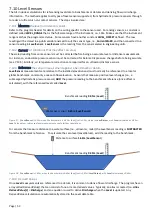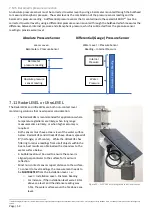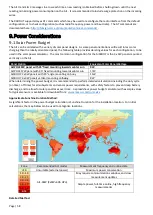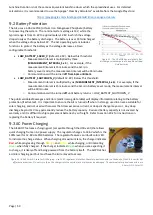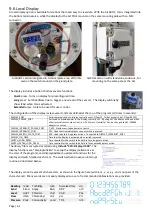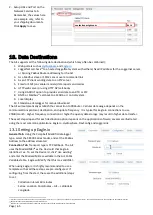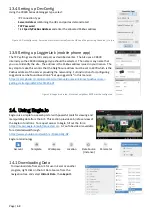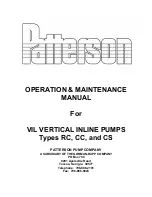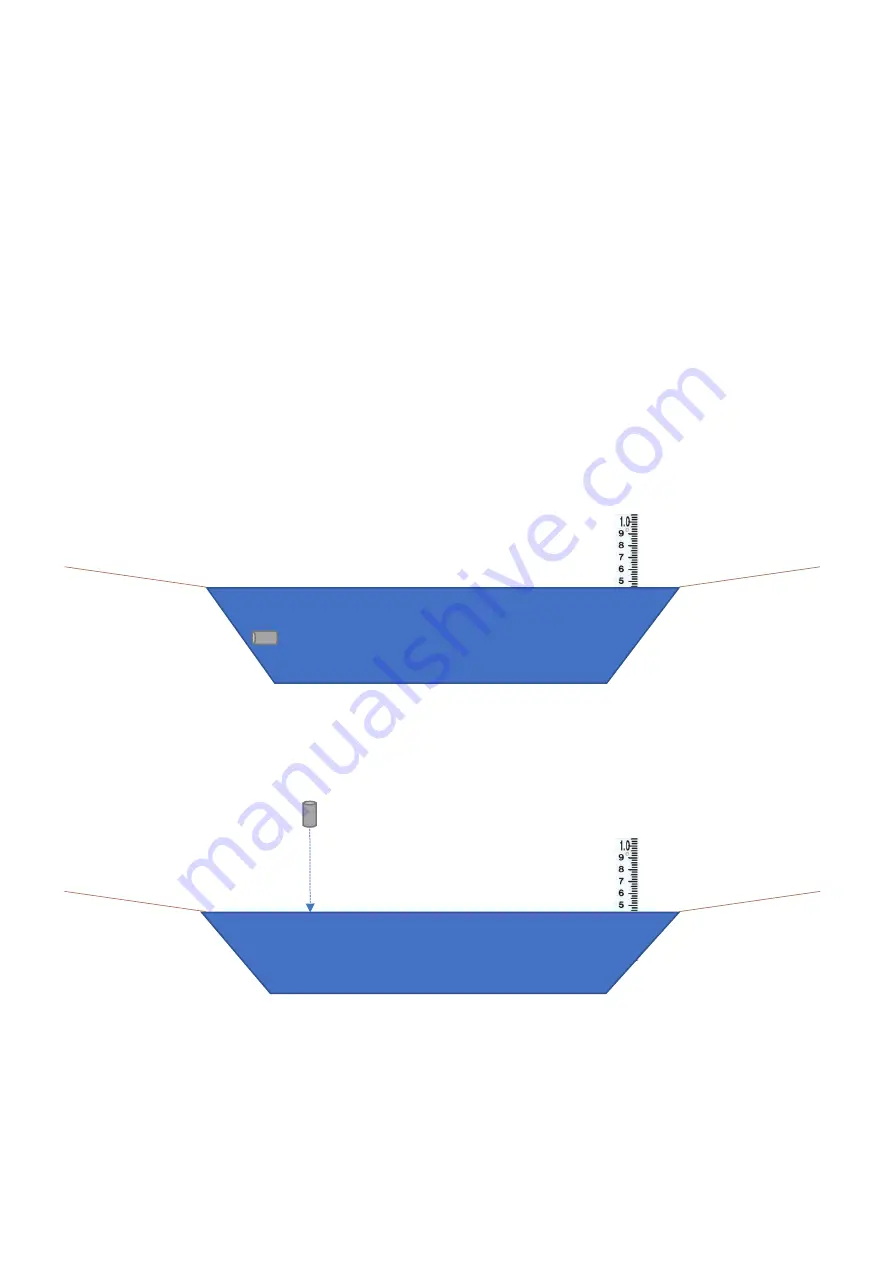
Page | 53
7.10
Level Sensors
The Ai1 includes calculations for referencing level data to benchmarks or datums and deriving flow or discharge
information. The method applies to all types of level sensors supported, from hydrostatic pressure sensors through
to radar or ultrasonic non-contact sensors. The steps involved are:
7.10.1
Measure the level (or distance) sensor.
Refer to the program header for details on the wiring specific to the sensor used. For analog sensors, a constant is
defined called
LEVEL_RANGE
that is the full-scale range of the instrument, i.e., 10m. Make sure that the instrument
range matches the programmed value. Some sensors have another constant
LEVEL_OFFSET
defined. The raw
reading will be stored in a public variable named to suit the sensor type, i.e.,
Current4to20
, and then converted to a
sensor reading in
LevelSensor
.
LevelSensor
is the reading from the sensor scaled to engineering units.
7.10.2
Correct for conditions that may affect accuracy.
The scaled reading from some sensors must be corrected before being an accurate level or distance measurement.
For instance, an absolute pressure sensor must be corrected for barometric pressure changes before being accurate
(see 7.10.5). Similarly, air temperature corrections are required for an ultrasonic distance sensor.
7.10.3
Reference the sensor measurement against a benchmark or datum
LevelSensor
measurements are relative to the installed elevation and must normally be referenced to a local or
global benchmark, commonly a cease to flow elevation. Sensors that measure positive level changes (i.e., a
submerged hydrostatic pressure sensor)
ADD
the pressure reading to the benchmark reference (once offset is
calculated), with the referenced level called
Level
.
Figure 27 - If
LevelSensor
is 0.25m when the benchmark is 0.45m, the offset is 0.2m, stored in
LevelDatum
, with
Level
calculated as 0.45m.
Level
is the datum referenced level measurement used in further calculations.
For sensors that measure distance to a water surface (i.e., ultrasonic, radar) the LevelSensor reading is
SUBTRACTED
from the benchmark reference. To calculate the zero level (LevelDatum), add the reading to the benchmark.
Figure 28 - If
LevelSensor
is 1.62m, when the benchmark is 0.45m the offset is 2.07m (
LevelDatum
), with
Level
calculated as 0.45m.
7.10.4
Derived Values
Once
Level
measurements are referenced to a datum, it is common to derive flow or discharge. The program has an
array called DerivedValue() that can consist of one or more derived values. Typically, an alias is created (i.e.,
Alias
DerivedValue(1) = Discharge
) and an equation is used to derive
Discharge
when the
Level
is updated. Any
DerivedValue calculations are automatically stored in the Level data table.
Water over sensor
0.25m
(
LevelSensor
)
Benchmark reading
0.45m
(
Level
)
Distance to surface
1.62m
(
LevelSensor
)
Benchmark reading
0.45m
(
Level
)

